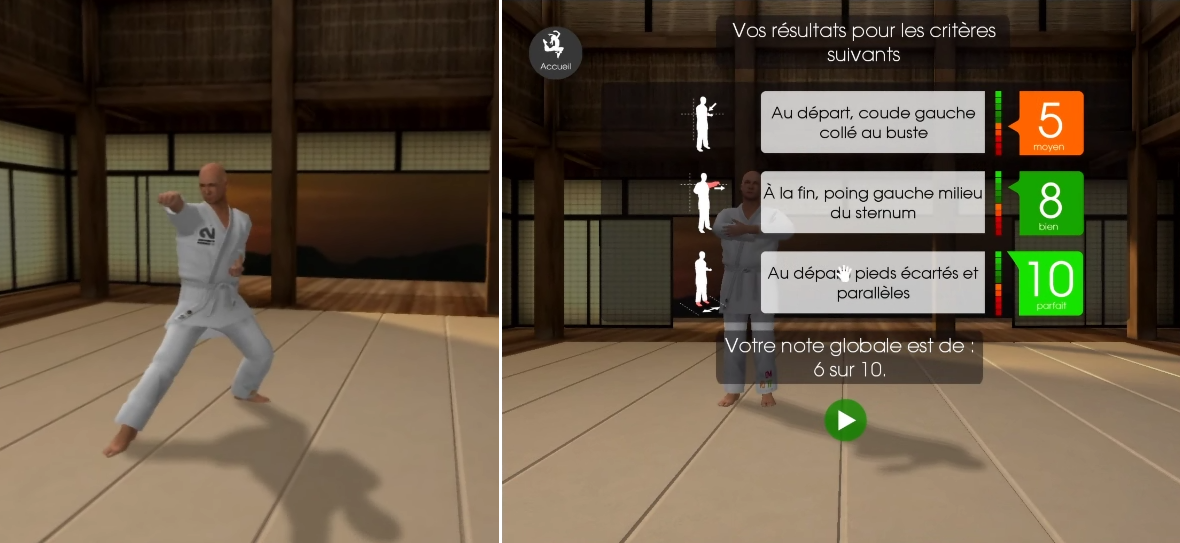Section: Contracts and Grants with Industry
Biofeedback
Participants : Richard Kulpa [contact] , Franck Multon, Anthony Sorel, Emmanuel Badier, Antoine Marin, Anne-Marie Burns.
The Biofeedback project aims at creating a training tool that can be used and configured by coaches in order to train athletes to repetitive motions such as katas in karate (figure 9 ). This project is funded by the DGCIS ("Serious Gaming" call) and is leaded by the M2S laboratory (University Rennes 2). The industrial partner of this project is the Artefacto society.
The training platform proposed in the Biofeedback project allows the training of athletes to repetitive motions. Even if the application is made on Kata in Karate and Dance, all the system can be used in other sport applications. It is based on a virtual coach that shows the movement to perform but also evaluates the errors made by the trainee and then proposes different stages of learning to help the trainee to improve his skills.
The training platform allows then the capture the user's movement, the visualization of his motion and finally to evaluate it to determine the errors made (temporal and spatial errors). The project is thus based on 4 parts:
-
Motion capture. The goal is to propose a low-cost motion capture system. To be usable by a wider audience, the system must be cheap and easy to use without complex calibration.
-
Avatar animation from low quality captured data. Real-time motion capture leads to motion artifacts. A real-time reconstruction of the movement is then necessary.
Gesture evaluation. Each gesture to learn is associated with a database of experts movements that defines the perfect movement and the acceptable variability around this movement. This expert motion is also associated with biomechanical rules that are used to evaluate the temporal and spatial errors done by the trainee. These errors are then used to provide a score to the training system to choose the next level of training.
Transfer from virtual to real. A scientific evaluation of the training in virtual environments has been done to determine if the progress made in such system is really useful in real practice.
The Biofeedback project ends in December 2011.



